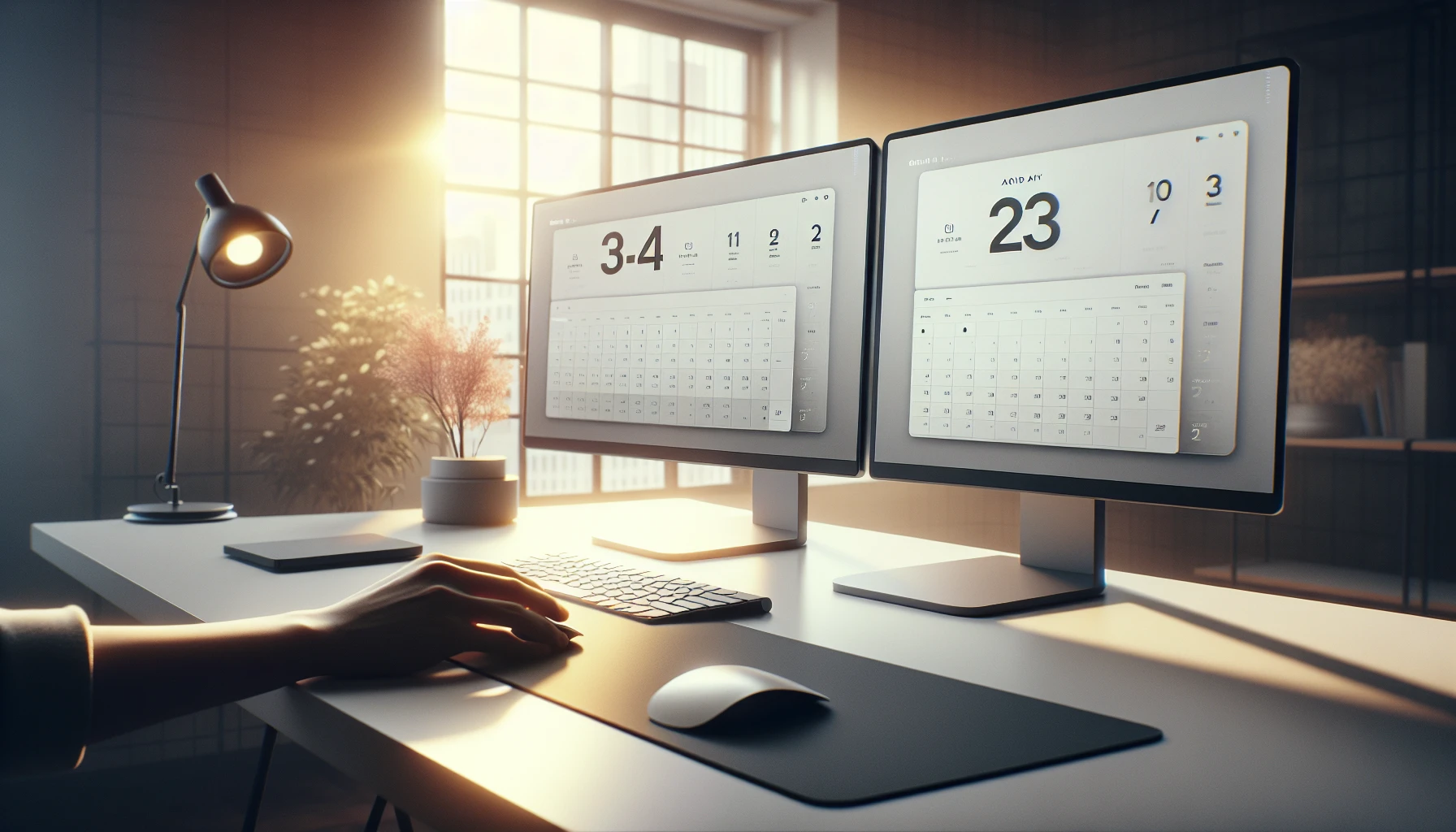· Ricardo Batista · 13 min read
How to Share Your Google Calendar - a quick and simple guide
Sharing your Google Calendar can help you sync with Apple, slack and others, plan meetings, and still keep your schedule clear.

Sharing your Google Calendar can help you quickly keep in touch with friends and colleagues and manage events with less hassle. It shows you how to adjust settings, connect your calendar with apps like Outlook and slack, and even let others see important details sometimes. This guide makes the setup simpler while still covering privacy aspects and everything else you need.
Key Takeaways
- Sharing your Google Calendar makes life a bit easier by keeping everyone on the same page
- Adjusting settings and inviting people is straightforward, even if it feels a bit cluttered at first
- You can sync with other calendars like Apple Calendar and Outlook to avoid double-booking events
- Our expertise shines through with Meeting Reminders’ ability to automatically ping the attendees that arrive late to your meetings
- Simple troubleshooting and thoughtful privacy controls help keep your schedule secure and stress-free
Benefits and Basics of Sharing Your Google Calendar
Google Calendar is more than just a date book; it’s a powerful tool for coordinating events, meetings, and deadlines. Sharing your calendar can save time, boost productivity, and even help manage meeting reminders. With sharing, everyone stays on the same page, and the system can automatically ping attendees who arrive late to meetings—ensuring no one misses out on important updates.
Why Sharing is Key
Sharing your calendar means you no longer have to rely on endless texts or calls to remind people about meetings. When everyone can see the same calendar:
- Schedules become clearer and planning is easier.
- Team members know when and where meetings are happening.
- Automated meeting reminders help nudge attendees if they’re running late.
When it comes to meeting reminders, think of it as a built-in nudge for those who might get lost in the day-to-day hustle. This feature ensures that even if someone forgets, the alert system is there to help. For instance, you can set up personalized reminders that ping late attendees—a helpful feature that keeps meetings running on time.
Meeting Reminders for Late Arrivals
One neat feature of sharing your calendar is automated meeting reminders. When paired with third-party tools or integrations, these reminders can:
- Automatically send notifications to individuals who join meetings late.
- Provide a gentle “heads up” that the meeting is already in progress.
- Help maintain a steady flow during group calls, ensuring everyone is aware of time-sensitive details.
This effective approach makes sure that even if someone misses the first few minutes, they get a reminder to join in as soon as possible. It’s a practical way to keep everyone accountable without having to manually check in.
Step-by-Step Guide to Setting Up Calendar Sharing
Sharing your Google Calendar may sound intimidating, but it’s a straightforward process. Whether you’re working solo or with a team, these simple steps will guide you through defending your privacy while making your calendar accessible to those who need it.
Accessing Google Calendar Settings
To get started, open your Google Calendar on a web browser because the sharing settings are easier to manage there. Here’s how:
- Click the gear icon in the upper-right corner.
- Select “Settings” from the dropdown menu.
- In the left sidebar, click on the name of the calendar you wish to share.
This section serves as your control panel, where you can choose who sees your events and at what level of detail.
Adjusting Sharing Settings and Event Details
Within the calendar settings, you can fine-tune who sees what. You have different levels of access, so consider how much detail you’re comfortable sharing. Follow these steps:
- Under “Access permissions for events,” check the option to “Make available to public” or choose specific people.
- Choose the level of detail to share:
- “See only free/busy (hide details)” if you just want others to know when you’re occupied.
- “See all event details” if you’re comfortable sharing extra info.
- Add the email addresses of the people you want to share the calendar with. You can assign roles to them, like viewer or editor.
Remember, when it comes to meeting reminders, full event details can be beneficial since each event can include automated alerts that provide extra context for late joiners.
Creating and Managing Events with Sharing in Mind
When setting up events, consider these best practices to ensure smooth coordination:
- Double-check that the event details are correct—include meeting links, agendas, and any necessary attachments.
- Use the “Default notifications” feature to customize alerts for event start times or changes in schedule.
- If you’re using a tool for meeting reminders, such as the Calendar Reminder, ensure it’s integrated correctly with your event settings.
Each event you create helps build an ecosystem of reminders and updates that keeps your team informed and punctual.
Advanced Integrations and Syncing Options
Google Calendar is versatile and can easily integrate with other calendar apps and scheduling tools. This section covers how to sync your calendar to make sure all your devices and apps work together harmoniously.
Syncing with Apple Calendar and iCal
You might be using different devices, so syncing your Google Calendar with Apple Calendar or iCal helps maintain consistency:
- In Google Calendar, go to “Settings” and find the “Integrate calendar” section.
- Copy the generated link for your calendar’s ICS feed.
- Open Apple Calendar or iCal, find the option to “Add Calendar by URL,” and paste the link.
- Once added, your events should start appearing in your Apple Calendar, keeping your schedule up to date.
This method allows you to use Google Calendar as your central hub, while also being able to check your calendar on Apple devices anytime.
Integrating with Slack
Slack is a popular tool among teams for communication and quick updates. Integrating your calendar with Slack is another smart way to manage meeting reminders:
- Install a calendar app or bot that syncs with Google Calendar.
- Follow the setup instructions to connect your Google account.
- Configure the bot to send reminders before meetings and ping late attendees.
Such integrations merge communication with scheduling, ensuring that you and your teammates never miss a critical update.
Using Third-Party Scheduling Tools
There are several third-party tools like YouCanBookMe that offer more detailed scheduling options and automated reminders. These services can be handy if you’re looking for:
- Advanced meeting scheduling features.
- Enhanced notifications for delayed or no-show meeting attendees.
- Additional customization options for sharing calendar details.
Integrating these tools with your Google Calendar can make managing appointments much more intuitive.
Additional Tool Integrations
For users who want to explore more, platforms like How-To Geek and Spiceworks Community offer handy guides and tips for syncing calendars, troubleshooting technical issues, and utilizing advanced features. They provide a wealth of insights from experts and users alike.
Troubleshooting and Best Practices for External Sharing
While Google Calendar’s sharing features are robust, sometimes things might not go as planned. Here are some tips and common issues along with their fixes.
Common Issues and How to Solve Them
When sharing your calendar, you may face various challenges. Use these steps to troubleshoot:
- If invitees can’t see event details, double-check that you’ve selected “See all event details” under the appropriate permission settings.
- For syncing issues between multiple platforms, refresh the connection by re-adding the calendar feed.
- If events are not showing in third-party tools, verify that the integration settings (like with Slack or iCal) are correct and updated.
Sometimes, a simple sign-out and sign-in to your Google account solves many syncing woes. Also, checking out articles on How To Use Google Meets can provide extra insights if you’re integrating meeting tools.
Best Practices for External Sharing
To maintain smooth operations when others have access to your calendar, follow these best practices:
- Limit detailed access only to trusted contacts. Use the free/busy option for more public sharing.
- Regularly review your sharing settings, especially if you change teams or projects.
- Keep your event details clear and concise so that automated reminders can work effectively.
By reviewing your sharing policies periodically, you ensure that everyone gets the appropriate level of access without compromising sensitive information.
Managing Permissions with the Google Workspace Admin Console
For those with internet-facing roles or larger teams, managing sharing through the Google Workspace Admin Console offers added control. This section highlights how admins can manage permissions while still taking advantage of the calendar’s sharing capabilities.
Safeguarding Privacy and Setting Permissions
Administrators have an extra layer of control over shared calendars. Here is how you can manage permissions and ensure privacy:
- Log in to your Google Workspace Admin Console.
- Navigate to the “Apps” section and locate Calendar settings.
- Configure the default sharing settings for your organization. You might choose to:
- Set calendars to show only free/busy statuses for external users.
- Allow detailed sharing only for specific groups or individuals.
- Regularly update permission levels as team roles change. This is particularly important for maintaining the integrity of meeting reminder systems.
Using these tools, admins can ensure that sensitive information—like meeting details that trigger automatic pings for late arrivals—is only shared with appropriate parties.
Steps for Adjusting Organizational Settings
To make sure your organization’s sharing settings align with your privacy needs and team workflows, follow these steps:
- Review all existing calendar shares in your organization.
- For each calendar, decide if it should display full details or just free/busy information.
- Communicate changes with your team so everyone knows what to expect in terms of meeting reminders and alerts.
- Leverage internal policies to manage who has editing versus viewing capabilities.
These measures not only secure your calendar’s data but also help in maintaining a system where automated tools, such as meeting reminders, function without hitches.
Practical Tips and Tools to Enhance Calendar Sharing
Creating an efficient calendar sharing system involves using additional tools and following a few practical tips. These steps can make your life easier and help you get the most out of your calendar sharing setup.
Useful Tools and Templates
Consider using tools and templates that streamline the process:
- Google Calendar templates can be customized to suit different meeting types and workflows.
- Tools like Google Meets Screen Share serve a dual purpose by helping with meeting setup and sharing screens during video calls.
- Apps that integrate with your calendar can automatically adjust meeting reminders and send pings to late attendees. This automation saves time and reduces the need for manual follow-ups.
By using these tools, especially when preparing for events and meetings, you create a seamless process that aligns with your workflow.
Tips for a Smoother Workflow
Enhance your calendar sharing process with these tips:
- Always check event details before sharing your calendar link.
- Set up recurring meetings with consistent reminders to avoid confusion.
- Encourage team members to update their own calendars so that everyone benefits from the timely notifications.
- Use color-coding in your calendar to quickly identify types of events—this can also be helpful when troubleshooting issues with meeting reminders.
These small adjustments can have a significant impact on overall productivity and communication during team meetings.
Integrating with Meeting Reminders
If you’re using meeting reminder tools that push notifications to late joiners, make sure the integration is set up correctly. Double-check the following:
- The timing of the automated pings. Adjust settings so that reminders are sent at appropriate intervals.
- That the reminder tool is linked with your shared calendar. This ensures that the tool can access full event details when necessary.
- Compatibility with other scheduling apps to avoid conflicts.
For additional information on meeting reminders, check out guides like How To Share Screen On Google Meets. Such internal resources can further streamline the setup process.
Leveraging External Resources
When you’re in need of more help or alternative approaches, consider browsing external websites known for their practical advice. A few solid choices include:
- How-To Geek, which offers easy-to-follow tips on many tech topics.
- Spiceworks Community, a place where IT professionals share and solve common issues.
- YouCanBookMe, which provides advanced scheduling tools that integrate with Google Calendar.
These sources not only offer detailed guides but also user experiences that can provide unique insights into managing calendar sharing and meeting reminders.
Final Thoughts on Google Calendar Sharing and Meeting Reminders
Sharing your Google Calendar correctly can lead to better organization and meeting management. By setting proper permissions, using integration tools, and following the guidelines above, you create a system where everyone can stay informed and meetings run on schedule. Whether you’re operating alone or as part of a larger team, these steps and tips can help ensure that scheduled reminders, especially those for late arrivals, are effective and timely. Keeping your workflow organized means fewer delays and smoother transitions between different parts of your day, making the entire process feel less overwhelming.
Conclusion
Looking back, we’ve seen how sharing your Google Calendar is straightforward and really useful for keeping events and meetings on track. The guide showed you how to set up sharing settings and tweak event visibility, and also highlighted ways to sync with other calendars like Apple Calendar and outlook. One key takeaway is that with a few simple steps, you can sync your schedule across multiple platforms and keep your contacts in the loop. Another lesson is that even when things go a bit off, basic troubleshooting can get them back on track without a lot of fuss.
We know handling calendars might seem a bit messy at times, but these tips simplify the process and put you in control of your schedule. For a smooth transition and to enhance your meeting experience, remember that Meeting Reminders offers the expertise to automatically ping those attendees who arrive late, keeping your meetings running efficiently. So give it a try and start making your schedule easier to manage today!
Frequently Asked Questions (FAQs)
How do I share my Google Calendar?
Just head over to your Google Calendar settings, find the “Share with specific people” option and add the email address. It’s simple and lets others see your events according to the permissions you give them.
Can I set different permissions for my Google Calendar events?
Yeah, you can! You can allow people to see all details, only free/busy slots, or even hide details sometimes. It all depends on how much info you want to share. Check the settings in your calendar to choose the right option.
Is syncing my Google Calendar with Apple Calendar and outlook straightforward?
Mostly, yes. For syncing, you often need to set up an internet calendar subscription. It may look a bit tricky at first, but once it’s done, your events update automatically. Just follow the instructions on both Google Calendar and your Apple or outlook apps.
How do I automatically ping the attendees that arrive late to your meetings?
Our expertise shines here! Services like Meeting Reminders let you automatically ping tardy attendees by simply connecting your calendar. It’s a cool feature that adds a bit of fun and a lot of efficiency to your meetings.
What should I do if my Google Calendar isn’t syncing properly?
If things aren’t syncing right, try checking your internet connection first. Then, look at your calendar settings or clear the database cache. Sometimes, logging out and back in can fix that annoying sync issue. If problems persist, Google Calendar Help is a useful resource to check out.



